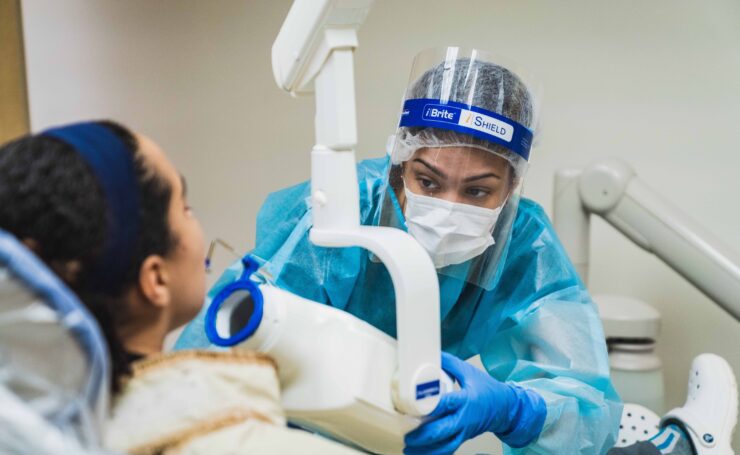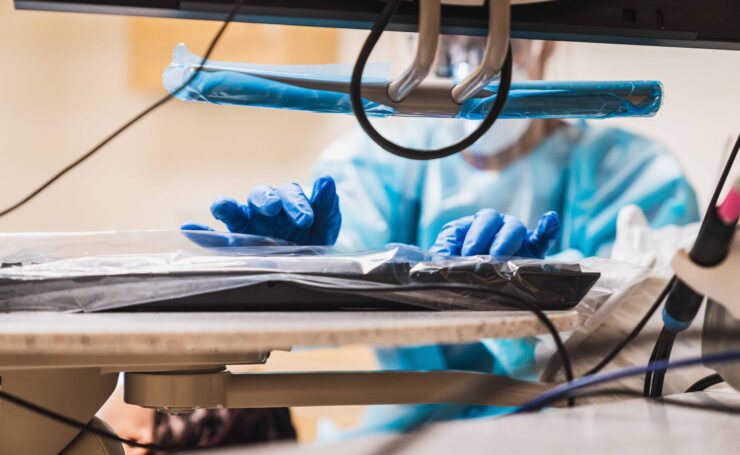Dental Education Clinic
Hours
The clinic is open part-time and hours vary.
We are not accepting new patients at this time. Please visit our webpage again in January.

Dental Hygiene Services
- Cleaning, fluoride, cavity-detection X-rays: $10
- Full-mouth series of X-rays: $10
- Panoramic X-ray: $10
- Sealants, each (Cost not to exceed $20): $5

Our Dental Assisting Clinic is NOT currently accepting new patients.
We provide services such as exams, x-rays, fillings, and crowns.
We do NOT provide services such as: Extractions, Emergency Care, Braces, Gum Surgery, Root Canals, Bridges, Implants, or dentures.
Dental Education Clinic Appointment Scheduling Gravity Form
Dental Program Health Information
The skin is cut with a blood-contaminated sharp item punctured with a contaminated needle.
Blood is splashed or spattered on broken skin.
Blood is splashed or spattered in the eyes, nose, or mouth.
Hands contain resident and transient microorganisms. Resident microorganisms survive and multiply on the skin and can be repeatedly cultured. Most are found in top layers of the skin with 10 to 20% found in deeper epidermal layers. Many are not implicated in infections, but some may cause infections when surgery or other invasive procedures allow their entry into deep tissues, in patients who are severely immunocompromised, or who have implanted devices.
Transient microorganisms represent recent contaminants that can survive or remain on skin for a limited period and can be pathogens acquired from infected patients. (Such as Hepatitis B). These organisms can effectively be removed by proper handwashing.
General routes of transmission of microbial agents in dentistry include:
- Direct contact with infectious lesions
- Direct contact with infectious blood.
- Direct contact with infectious saliva.
- Indirect transmission via transfer of microorganisms from contaminated intermediate objects.
- Spatter of blood, saliva, or nasopharyngeal secretions directly onto broken or intact skin or mucosa.
- Aerosolization, the airborne transfer of microorganisms.
Most human microbial pathogens have been isolated from oral secretions. Because of this, repeated exposure to the microorganisms present in blood and saliva results in a significantly higher incidence of infectious diseases among dental professionals than for the general population.
Organic debris may be transparent or translucent, the debris then dries as a clear film on skin, clothing, and other surfaces.
There are some dental practitioners and auxiliaries who fail to comprehend or appreciate the infection potential presented by saliva and blood during routine dental procedures. This failure places themselves, patients, and others at an increased risk of contracting an infectious disease.